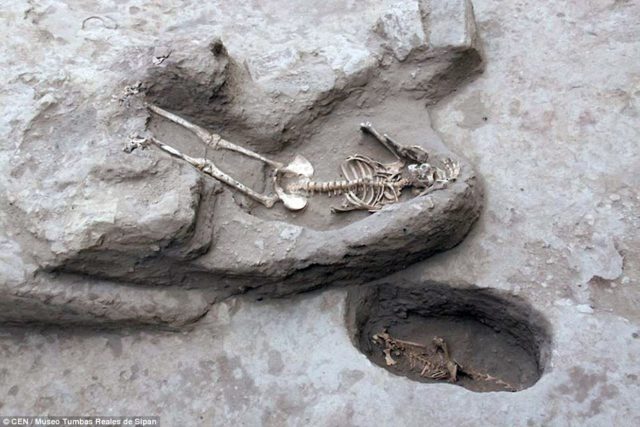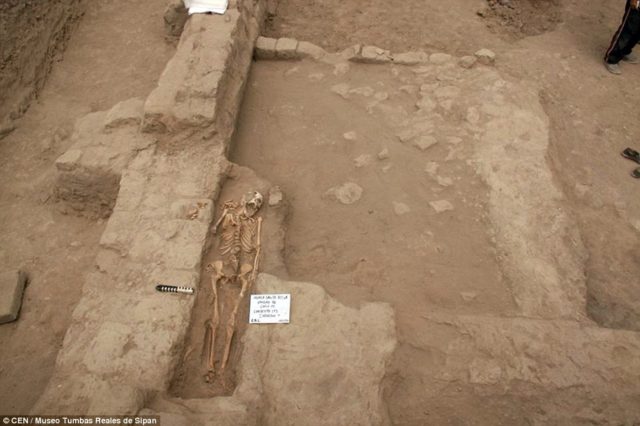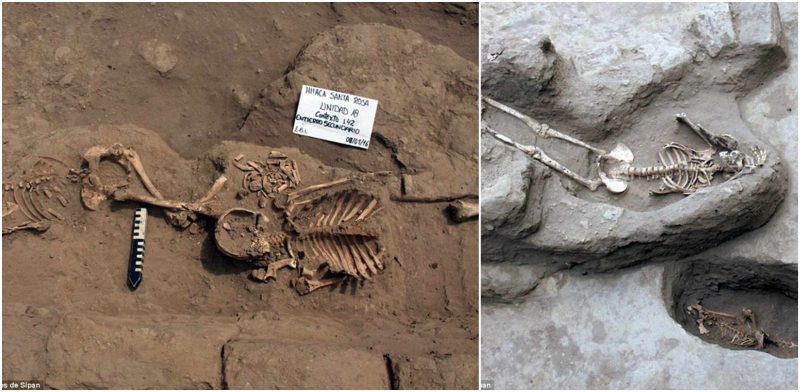Ever since the humans started exhibiting culture and forming religions, sacrifice has played an integral part of that religious experience. Although in most of the cases sacrifices and offerings were limited to to crops, precious belongings and animals, a more intriguing (and brutal) aspect of this tradition is the sacrifice of human beings. A team of archaeologists working on the northern coast of Peru has recently made a startling discovery, unearthing a gruesome burial site which supposedly contains the remains of sacrificed women.
The burial site is located under the remains of an ancient temple which was believed to have been built some 1200 years ago. The most intriguing part of the discovery came when the archaeologists found out that all six bodies buried under the temple were female. Ancient artifacts and figurines were also found around the bodies, which further strengthens the theory of sacrificial burial. Unlike other burial sites, sacrificial or otherwise, bodies of these six women were willfully contorted and bent to make them face the mountains. Archaeologists are unable to provide the complete picture of the sacrificial ceremonies from the time, since there is very little information about the culture that supposedly built these temples.

Experts believe the temple and the burial site comes from a civilisation known as ‘The Lambayeque’, who lived and thrived in the regions along the northern coast of Peru from 750 AD and vanished somewhere around 1375 AD. The Lambayeque civilisation predates the Inca civilization which is probably the most famous ancient Peruvian civilization. As far as we know the Lambayeque were believed to be a peaceful people, since there is no record of Lambayeque exhibiting any ambitious attempts to expand their territory. The eventual demise of the Lambayeque came from a defeat by Chimu Empire in 1375 AD.
Mostly Lambayeque traded with the neighboring civilizations from present-day Chile, Colombia, and Ecuador. The Lambayeque were famous for building gigantic religious temples overlooking their cities.

Archaeologists are unsure about the motive behind the sacrifices made by the Lambayeque; however there is enough knowledge available to the researchers about similar sacrifices carried out by Inca civilisation which emerged in the region much later. One ceremony, in particular, stands out, known as Capacocha the ritual involved some celebration and then child sacrifice. First, local elders were ordered to find innocent children which would then represent the ideal human perfection. These children were married together in a ceremony and were given a number of figurines. Children were then honoured by their family and community before being sacrificed, supposedly to appease the gods.
There is still a lot to learn about the gruesome women sacrifice of the Lambayeque and the motives behind the whole ritual. Archaeologists are determined to shed more light upon the everyday life of Lambayeque, more excavations are being planned in northern Peru to achieve that.
Source: http://www.dailymail.co.uk/sciencetech/article-3417699/Secret-sacrifice-chamber-beneath-1-200-year-old-temple-Contorted-skeletons-women-believed-offered-pre-Incan-gods-bloodthirsty-rituals-unearthed-Peru.html
